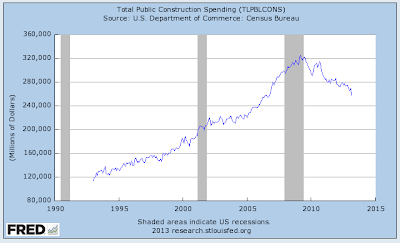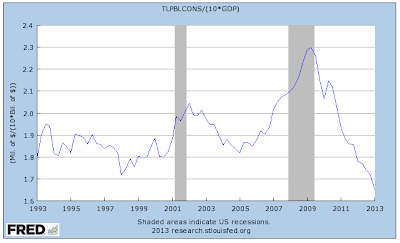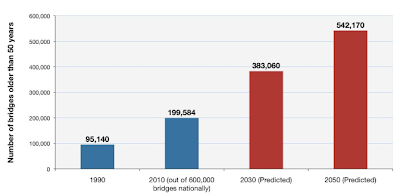While common sense, something that seems to be lacking in Washington, would tell us that governments must make some changes to get the revenue side of the ledger to balance the spending side, there is spending that should remain "sacred". Unfortunately, such has not been the case and there is hardly a more dramatic case of underspending than the public spending on infrastructure. This has become increasingly apparent over the past few years as systemic failures have either led to civilian casualties.
From our friends at FRED, here is a graph showing total public spending on infrastructure since the mid-1990s:
Total public spending on construction peaked at $325.481 billion in the first quarter of 2009, just as the Great Recession was officially coming to a close. Since then, spending on infrastructure has dropped to its current level of $258.301 billion in the first quarter of 2013, a drop of 20.6 percent. Government spending on construction is now at levels last seen in 2006.
Here is an even more-telling graph from FRED:
This graph shows government spending on construction as a percentage of GDP and shows us that, over the 20 year period from 1993 to the present, construction spending as a percentage of GDP is now at a 20 year low, coming in at just 1.65 percent of GDP. During the Great Recession, public spending on construction as a percentage of GDP hit a 20 year peak of 2.3 percent in the first quarter of 2009 and has since fallen by 0.65 percentage points or 28.3 percent. Over the 20 year sample, construction spending averaged 1.92 percent of GDP so you can see that current spending levels are well below average.
Let's close by taking a quick look at a single key aspect of America's infrastructure; its bridges. With the average American bridge having a lifespan of 50 years and an average age of 42 years, the current Administration is just kicking the can further down the road as shown on this bar graph:
Right now, 68,842 bridges or 11.5 percent of the nation's total are considered "structurally deficient".
In the last half of the first decade of the new millennium, here is a look at the underfunding problem for bridges alone:
Yes, we all agree that we need to cut spending, however, public safety over the medium- and long-term is paramount and it's looking like government is not up to doing what is really necessary.
Click HERE to read more of Glen Asher's columns
You can publish this article on your website as long as you provide a link back to this page.





Be the first to comment